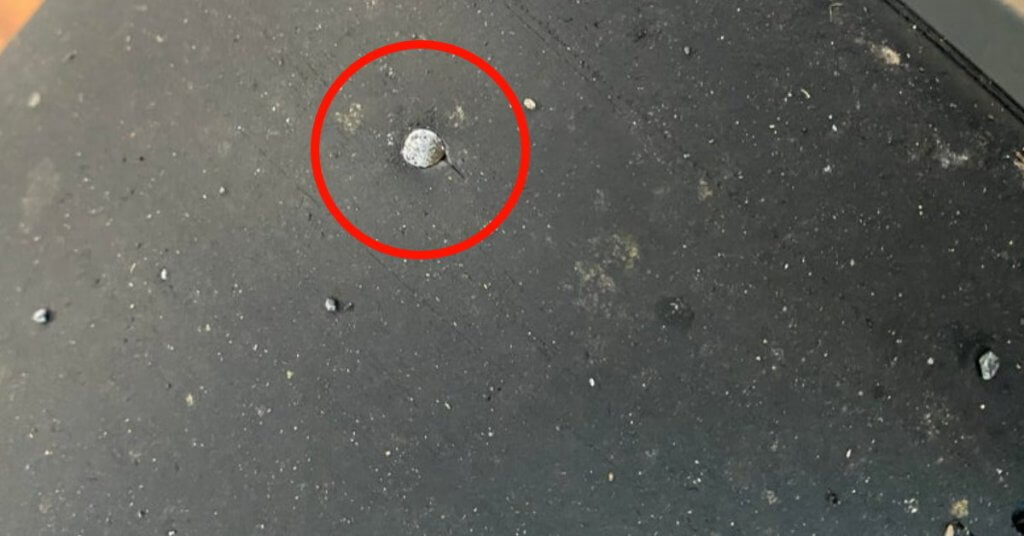The worst thing has happened, you are planning to head out and find that you got a flat tire on your Onewheel. Most punctures on your board can easily be fixed if they are small enough because the tire comes with tire sealant inside from the factory.
The pressure of the escaping air forces the sealing particles into the opening, where they build up and intertwine to form a long-lasting, flexible plug.
If the hole is too big or not sealing properly then it might be too big or you may not have enough sealant inside. The last resort is to use a tire puncture kit to seal the puncture.
How To Patch an Onewheel Tire
- The first thing is to visually inspect the tire to try and find the leak. Look for any nails or debris sticking out from it. Pull the object causing the puncture out and mark the location.
- The tire is going to deflate, try first to see if the slime inside is enough to patch the hole. Rotate the tire so the hole is facing down. This will make the slime move to the hole. Inflate to around 30-35 psi with the puncture still at the down position and leave it like this for a few hours. It can take up to a day for Slime to patch the hole.
For better tire sealant read the comparison between Slime and Armor-Dilloz Red down below.
If you need to fill with more tire sealant, pop the valve stem and fill the tire with around 8 oz of tire sealant. - Deflate the tire to your desired riding pressure, not sure check out the Onewheel tire pressure guide, and go out for a short test ride. During the ride and after check to see that the pressure is stable and the puncture is patched.
How to plug an Onewheel Tire
The tire on the Onewheel is a go-kart tire. If the tire sealant doesn’t patch the hole then a go-kart or car tire puncture repair kit be a good option. The kit consists of a plunger to clean the whole and then a plug to push into the tire to seal it off. The good thing is that these kits are made for cars and the wheels see way more tire abuse than an Onewheel will ever do.

Onewheel Tire Sealant
All Onewheel boards come with Slime tire sealant from the factory. This sealant will patch most small holes your tire might get. It can prolong the lifetime of the tire when the tire is wearing thin, you will see this as small dark spots when the sealant is slowly leaking out and patching the surface. When to replace your Onewheel tire.
Armor-Dilloz vs Slime Tire Sealant
Slime’s Prevent & Repair Tire Sealant is the official tire sealant used in the stock tire of the Onewheel. The pressure of the escaping air forces the rubber-sealing particles into the opening, where they build up and intertwine to form a long-lasting, flexible plug. Slime can seal holes up to 1/4″ (6mm).
If you are looking for better performances and a sealant that can seal holes up to the double size, 1/2” (12mm) look into Armor-Dilloz. It uses a more advanced sealant technology incorporating ballistic fibers along with rubber particles that vary in size. This formula creates a web of rubber-filled fibers that forms a solid physical plug.
Compared to Slime and other sealants Red Armor-Dilloz incorporates an extremely high ballistic fiber load, a load of variable particle size rubber particles, high-tech wetting agents, and significant amounts of corrosion inhibitors to protect the tire and wheel.
| eature | Slime Tire Sealant | Armor-Dilloz Tire Sealant |
|---|---|---|
| Sealing Capability | Up to 1/4″ (6mm) punctures | Up to 1/2″ (12mm) punctures |
| Installation | Pre-installed in all Onewheel boards | Requires separate purchase and application |
| Cost | Generally more budget-friendly | May come at a higher price point |
| Technology | Rubber-sealing particles | Ballistic fibers and variable-sized rubber particles |
| Ballistic Fiber Load | N/A | Extremely high ballistic fiber load |
| Suitability | Effective for common, minor tire issues | Enhanced performance for larger punctures |
| Default Option | Factory standard on Onewheel boards | Not the default option, needs to be chosen |
| Availability | Readily available | Available but requires separate purchase |
| User Effort | Minimal, as it comes pre-installed | Requires additional effort for purchase and application |
The load on the tire of an Onewheel is relatively low and any puncture sealed by a tire sealant will allow you to continue to safely and reliably operate the board. There is no need to plug the tire if the sealant does the job.
When everything is fixed then it’s time to pump the tire again, depending on where you ride, weight, and style different tire pressure is recommended. For ease of use check out the Tire pressure calculator.
Pros and Cons of Slime and Armor-Dilloz Tire Sealants:
Considering these pros and cons will assist Onewheel riders in making an informed decision based on their preferences, budget, and specific needs for tire sealant performance.
Slime:
Pros:
- Factory Standard: Slime comes pre-installed in all Onewheel boards, making it readily available for immediate use.
- Effective for Small Holes: Known for efficiently sealing punctures up to 1/4″ (6mm), addressing common minor tire issues.
- Cost-Effective: Being the default sealant, Slime is often more budget-friendly compared to alternative options.
Cons:
- Limited Hole Size: Slime may struggle with larger punctures exceeding 1/4″, potentially requiring additional intervention.
- Standard Performance: While reliable, some users may seek enhanced performance beyond Slime’s capabilities.
Armor-Dilloz:
Pros:
- Advanced Technology: Armor-Dilloz employs a more sophisticated sealant technology, incorporating ballistic fibers and varying-sized rubber particles.
- Seals Larger Holes: Capable of sealing punctures up to 1/2″ (12mm), providing an extended range for effective repairs.
- High Ballistic Fiber Load: Offers superior durability and strength due to an extremely high ballistic fiber load.
Cons:
- Additional Cost: Armor-Dilloz, as a premium option, may come at a higher price point compared to the standard Slime sealant.
- Not Default: Unlike Slime, users need to purchase and apply Armor-Dilloz separately, requiring additional effort.
Uncertain about what’s the best pressure for your XR, check it out here.
Check this post if you are unsure when to replace your Onewheel Tire.


